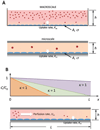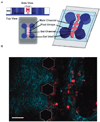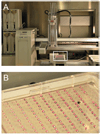Fundamentals of microfluidic cell culture in controlled microenvironments
- PMID: 20179823
- PMCID: PMC2967183
- DOI: 10.1039/b909900j
Fundamentals of microfluidic cell culture in controlled microenvironments
Abstract
Microfluidics has the potential to revolutionize the way we approach cell biology research. The dimensions of microfluidic channels are well suited to the physical scale of biological cells, and the many advantages of microfluidics make it an attractive platform for new techniques in biology. One of the key benefits of microfluidics for basic biology is the ability to control parameters of the cell microenvironment at relevant length and time scales. Considerable progress has been made in the design and use of novel microfluidic devices for culturing cells and for subsequent treatment and analysis. With the recent pace of scientific discovery, it is becoming increasingly important to evaluate existing tools and techniques, and to synthesize fundamental concepts that would further improve the efficiency of biological research at the microscale. This tutorial review integrates fundamental principles from cell biology and local microenvironments with cell culture techniques and concepts in microfluidics. Culturing cells in microscale environments requires knowledge of multiple disciplines including physics, biochemistry, and engineering. We discuss basic concepts related to the physical and biochemical microenvironments of the cell, physicochemical properties of that microenvironment, cell culture techniques, and practical knowledge of microfluidic device design and operation. We also discuss the most recent advances in microfluidic cell culture and their implications on the future of the field. The goal is to guide new and interested researchers to the important areas and challenges facing the scientific community as we strive toward full integration of microfluidics with biology.
Figures







References
Publication types
MeSH terms
Grants and funding
LinkOut - more resources
Full Text Sources
Other Literature Sources

